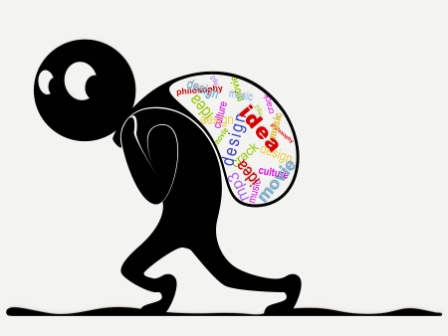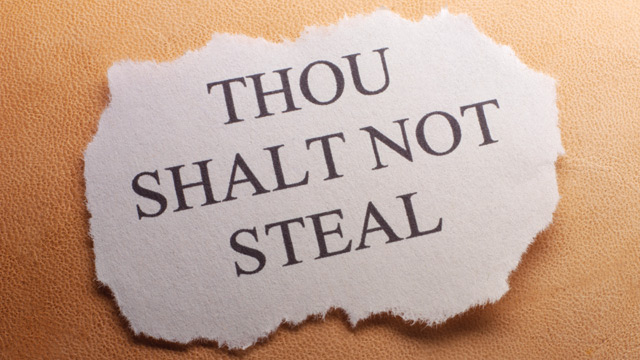Writing without Worries
Most of us have been there.
The new assignments and papers always follow a similar route. Careful planning takes place first. The workload of the paper is divided by the time till the deadline and a schedule is made in mind (paper is preferred though). Then, we believe that it will surely be done (yeah!). Then, what’s left to do? Chilling out and procrastination take over our mind and it is not until few weeks (or, few days depending on the nature of work) that we realize that we should have started working right off. Another plan and schedule (tighter and busier, of course) comes into existence. We swear to work very hard. Few days go on and only a teeny bit of the work is done. Then, at the eleventh hour, we start working our asses off in a half-assed way (I feel this while writing this article too). And, it is in the eleventh hour that we realize truly that the paper/assignment/work requires a lot of study. Then, what’s next? We Ctrl C and Ctrl V texts off Wikipedia and other sites we deem relevant. And, Poof! Our paper is ready in no time (ignore the variable font sizes though). And, this is the most basic form of plagiarism which we do in our academic life (I do not need to speak about citation because it is usually not done and even if it is done, is irrelevant). Hence, from our student life, in the basic form, we learn to plagiarize. And, in most of the cases, it does not stop there because the students do not realize that they are plagiarizing.

Plagiarism basically is academic theft. The knowing or more commonly unknowing passing off of somebody else’s ideas or research or opinions as your own without any citation or reference and acknowledging that you have used somebody else’s idea is plagiarism. This may include writing lines from your best book in your paper without citation and even the lyrics from your best songs (shit!). Even writing off our own ideas from previously published work is deemed self-plagiarism. Generally, writers and students use the works of known scholars to support their idea. In literature, sometimes we may not be able to differentiate between allusion and plagiarism but, this can, more or less, be cleared by the gravity of the original idea in the literary work.
Inadequate paraphrasing or Dense Paraphrasing, wholly quotable documents and ideas, absence of proper citation, making of fake authors in a mixed-up quote (Laxmi Prasad Sama) are the common constituents of plagiarism. In addition to that, copying bits and pieces from various scholars’ work and changing few words to give it a taste of originality (Thesaurus comes in handy, believe me) is now regarded as one of the dominant form (most popular I believe) of plagiarism called mosaic plagiarism. It has completely displaced the unfortunate, busy and less intelligent idiots who completely copy every texts and full stops (Verbatim Plagiarism).

One question arises. Why do people plagiarise? The issue talked in the introduction to this article barely scratches the surface by mentioning about procrastination. A lot of people plagiarize in academic sector to get an easy degree. They do not even have to plagiarize, they pay the unofficially declared degree granting institutes to make their research paper for thesis and, the institute then plagiarises. Absence of original ideas, the need for easy degree, lazy nature along with procrastination, the trend of society to popularize a PhD in front of a name without the knowledge of its value are the major aspects which promote procrastination in Nepali context. The incompetence of Universities to punish the idea thieves adds to it. “I am I, and I wish I weren’t” (Aldous Huxley, Brave new World) seems relevant here. People want a drastic change in their writing and research in a short period of time and as a result end up plagiarizing. They should be content with what they are. Change is slow but, definitely achievable (escaping pessimism).
Bhanu Bhakta Acharya in his article “Copy and Paste” published in My Republica newspaper on 13 Jan. 2016 says, “The current VC of Tribhuwan University, one of the largest universities in the world in terms of student enrolment has plagiarized content from a Turkish Scholar. Similarly, Kedar Nath Ghimire, blacklisted by the University Grant Commission (UGC) for plagiarism, was appointed as a member of the TU Service Commission. Also, half a dozen professors have been proven plagiarists by UGC. Despite an abundant media campaign and activities to shame these officials in public, they remain intact in their nominated positions due to a mutual syndication of major political parties. As a result, nearly 4 lakhs students of TU, the future writers, artists, professionals, teachers, are guided by proven plagiarists. These incidents have resulted in a wave of pessimism among professionals and academicians in Nepal. They feel that political loyalty, rather than integrity, is the strongest armor of Nepali Literature.” This type of situation in the top University of Nepal clearly depicts the situation of plagiarism in Nepal. In field of Nepali Literature, Shankar Lamichhane was discouraged to write by an anonymous accusation of plagiarism, an accusation he accepted, but which is still deliberated over by critics. (Thapa, Manjushree, Nepali Times).

Plagiarism in uncontrolled in Nepal. Exact laws on Plagiarism are not in existence but, the Copyright Act of 2059 B.S. more or less addresses it. However, the pragmatic values of the Act are obsolete. Under Chapter 6, 25 c, the ACT states that it is a punishable offence to make work of another subject or nature by changing the form and language of a work belonging to another person with a motive of deriving economic benefit. The penalty ranges from Ten thousand rupees to 1 lakh or 6 months in prison or both for the 1st offence and, Twenty thousand to 2 lakhs or 1 year in prison or both for 2nd offence onwards. The act itself is not clear about intellectual theft (Hence, the VC running free) and talks more about copyright protected materials. We can, more or less, say that legally, plagiarism is unchecked. The only consequences are destroyed academic/professional/student reputation. But, Pratyoush Onta, a known researcher working on Martin Chautari says that even if the plagiarists are able to fool their readers, teachers or supervisors now, future readers of their works, articles, thesis or dissertations are more likely to discover their acts of plagiarism and repost them to the competent authorities and shame them in public.

Avoiding plagiarism in not as hard as we might think. The facts of common knowledge (with at least 5 credible sources) or widely known facts, like the height of Sagarmatha, need not be cited. Acknowledging the work of others and original source, proper citation, correct paraphrasing, good time management help in avoiding plagiarism. Also, today there are many websites which check plagiarism. This can come handy if we want to avoid unintended plagiarism (Hail Technology!). Also, works under the Public Domain (works no longer protected by copyright) can also be used without reference but, the terms and conditions under which works enter the public domain are a bit complicated (Citing the original source is far easier).
Stating all these densely paraphrased opinions and begging sorry for all the citations missed in the article, I hope it somehow helps in writing without worries.
Works Cited:
Pratyoush Onta. “Beyond Plagiarism: How Honest Research Could Be Promoted in Nepal.” Setopati, 30 Aug. 2015. Web. 29 Dec. 2016.
Acharya, Bhanu Bhakta. “Copy and Paste.” My Republica, 13 Jan. 2016. Web. 29 Dec. 2016.
Thapa, Manjushree. “Shankar Lamichhane.” Nepali Times, 2002. Web. 30 Dec. 2016.
Harvard ISite. “Harvard Guide to Using Sources.” What Constitutes Plagiarism? § Harvard Guide to Using Sources. Harvard ISite. Web. 29 Dec. 2016.
YSJLTD. “Understanding Plagiarism.” YouTube. YouTube, 22 Jan. 2013. Web. 29 Dec. 2016.
BrockLibrary. “What Is Plagiarism and How to Avoid It.” YouTube. YouTube, 02 Sept. 2014. Web. 29 Dec. 2016.
EditageInsights. “Tips to Avoid Accidental Plagiarism.” YouTube. YouTube, 12 Nov. 2013. Web. 29 Dec. 2016.
D’Annunzio, Melissa Huseman. “The Punishable Perils of Plagiarism” TED-Ed. TED-Ed, Web. 29 Dec. 2016.
Image Credits:
//qualitycustomessays.com/blog/wp-content/uploads/2014/07/qualitycustomessays.com_plagiarism.png
//www.plagiarismchecker.net/img/plagiarism-stolen-ideas.jpg
//grandstreetlibraryela.wikispaces.com/file/view/Plagiarism.gif/298878814/Plagiarism.gif
//acrbulletin.org/images/FEB2016/plagiarism.jpg
//trinitynews.ie/wp/wp-content/uploads/2015/09/stealing.jpg
